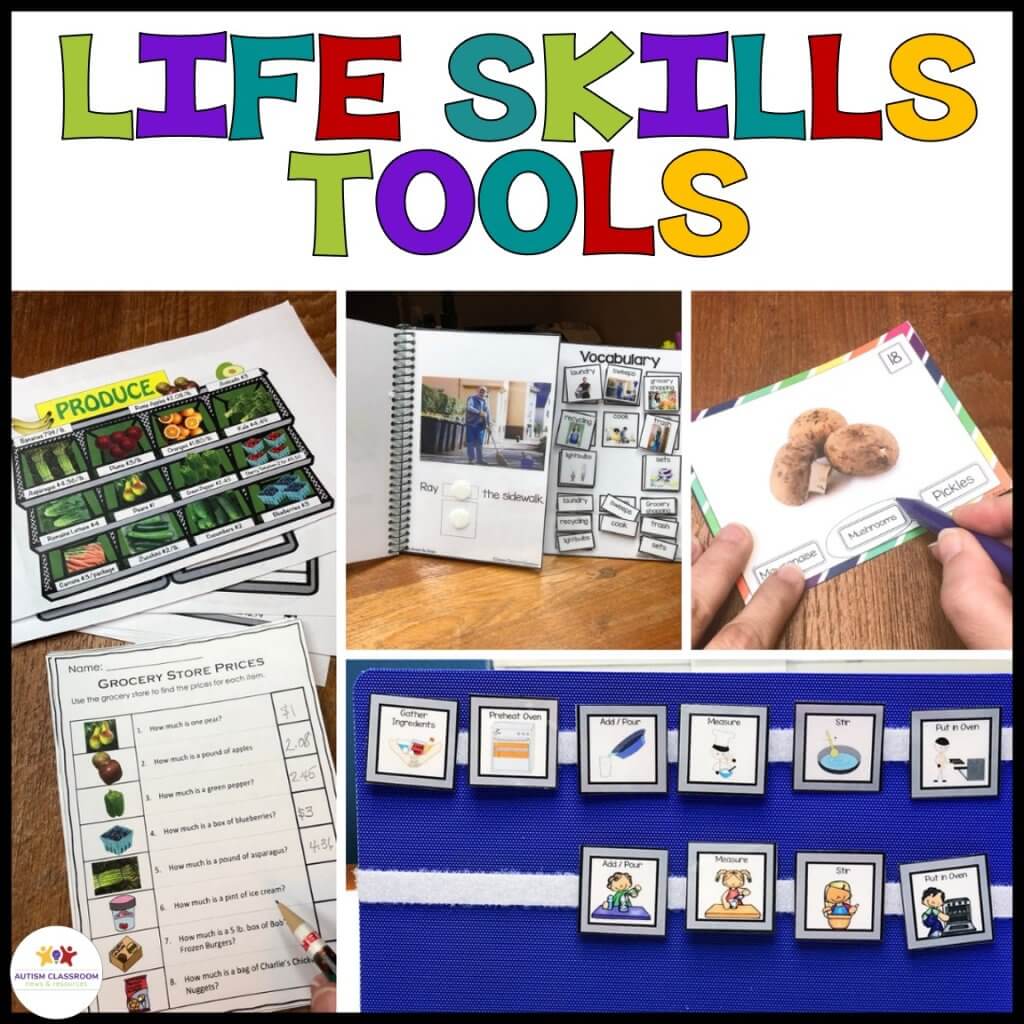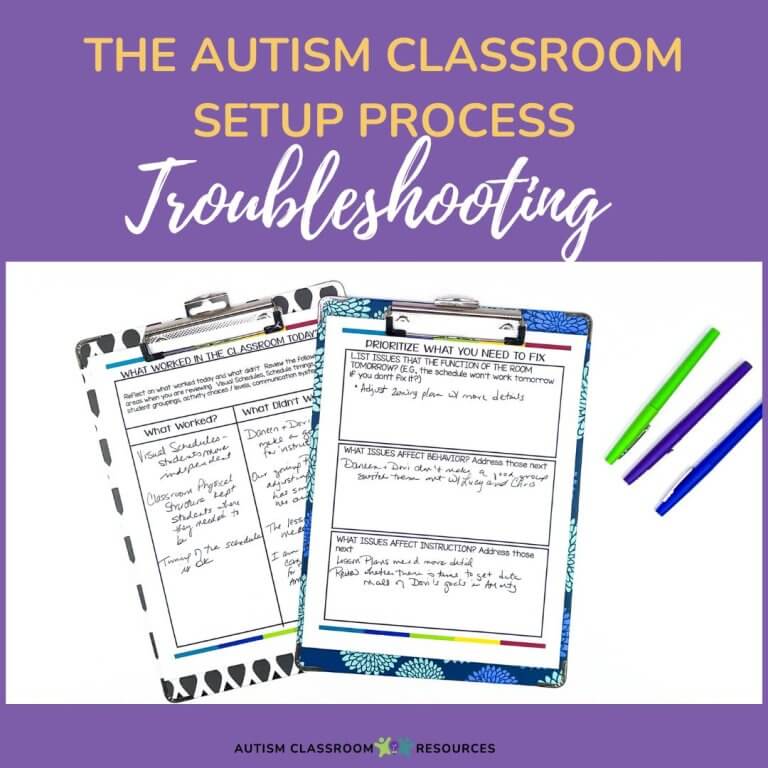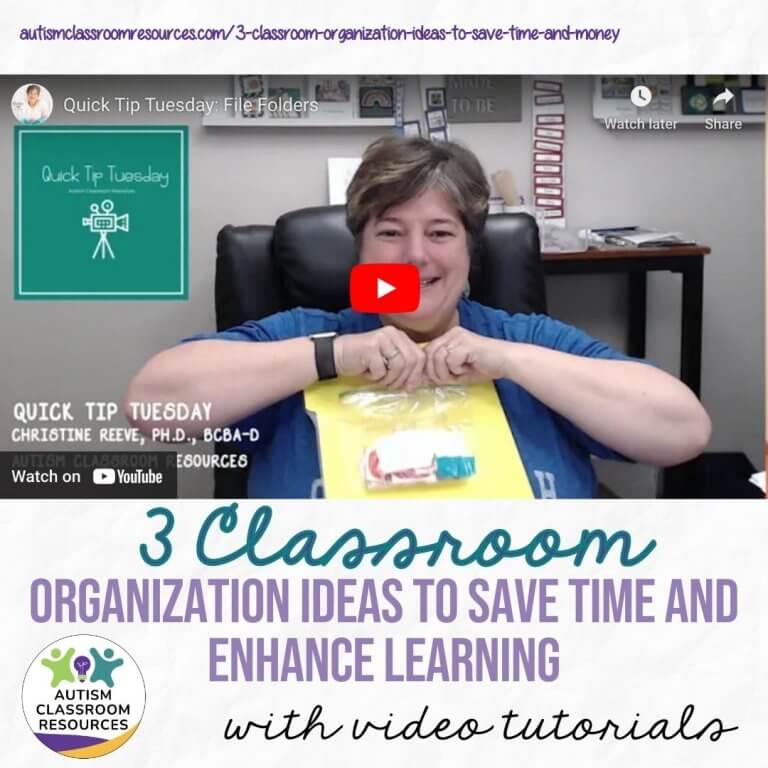Sharing is caring!
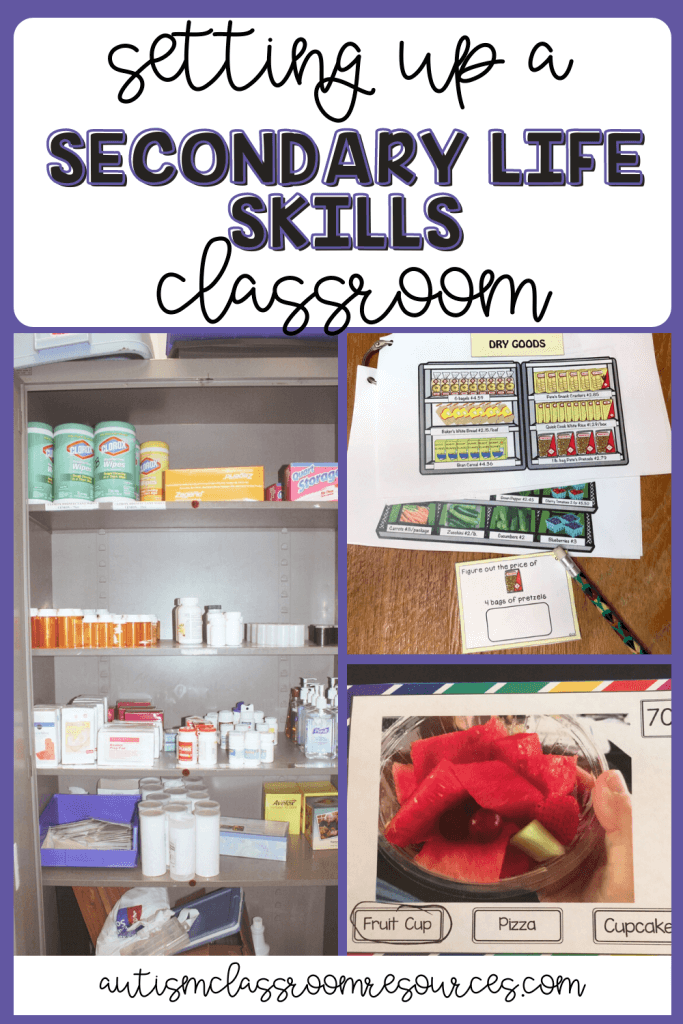
This is the second post in a mini-series on life skills classroom setup for middle and high school. In the first post, I talked about schedules and setting up the physical space for a life skills classroom in high school. I gave an example of a high school schedule and classroom zoning plan as well as a Teaching Implementation Plan. You can find a schedule and description of a middle school life skills classroom in this post.
Today I want to talk about the areas and tools that go into life skills classroom setup at the secondary level. We’ll discuss visual supports, curriculum, materials, and a community prep area for your secondary life skills classroom.
Visual Supports for Setting Up a Life Skills Classroom
In addition to setting up the furniture, we have to think about what types of visual supports the students will need. Usually we will have some type of visual schedule for each student. Some students will be readers and can use a visual schedule written out and checked off. Or they might use a day planner or to-do list. Some might need a small picture with the word as a reminder at times. Others might still need to actually move the pieces about but still be able to read the schedule without needing pictures. And some will need picture schedules that they use to manipulate and navigate their environment.
![Visual Schedule Examples [a picture of multiple types of individual student schedules]](https://autismclassroomresources.com/wp-content/uploads/2021/10/Schedule_Examples-1-1024x536.png)
The set of schedules below is for a middle school classroom. Some of the students could use a written schedule with small pictures, some needed a picture schedule they could manipulate and one student needed the schedule broken down into just first and then visuals because the whole day overwhelmed him. For ideas about schedules, see this post on individual schedules and this one continues with more examples of schedules. This post has ideas for vocational and community-based instruction activities.

These two pictures are good examples of other types of visual supports we might use in a classroom like this. The kitchen has tons of visuals showing where things are kept to help in locating items in cooking as well as in putting them away.
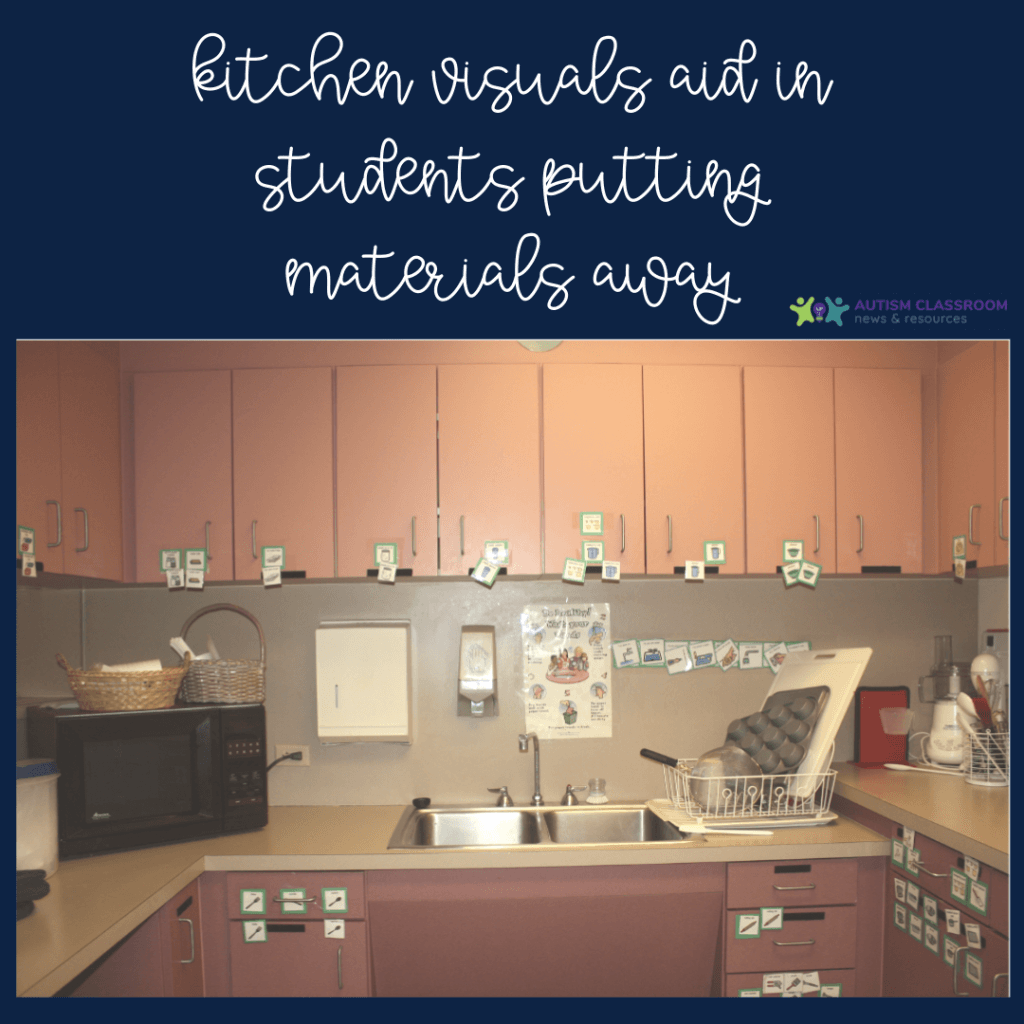
In the kitchen area of another classroom, the teacher has a mini-schedule for loading and unloading the dishwasher.
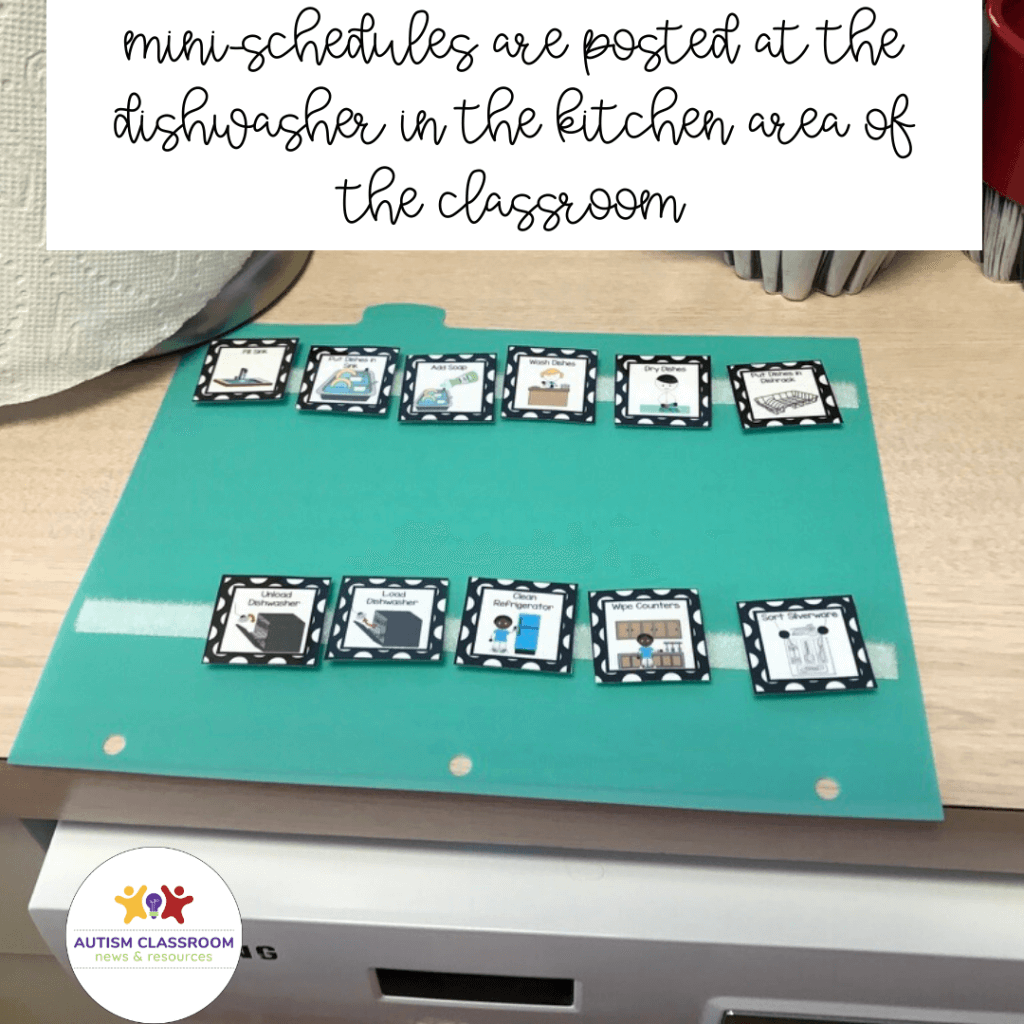
Setting Up the Curriculum in a Life Skills Classroom
And finally, in thinking about your life skills classroom setup, the next step after setting up the physical environment and the schedules, we have to think about curriculum. A scope and sequence is critical to knowing what to teach when. There are a few functional curricula out there to choose from. I review some of them in this post.
In addition to a scope and sequence for functional skills, we also need to align instruction with the standards. One easy and free tool to do this that has good ideas for students with significant disabilities of all ages is the Standards-Based Life Skills Curriculum that can be found through OCALI.com. It has a cross-reference of ideas for teaching functional skills that align with the standards. Another option that is more comprehensive is the Unique Learning System has some great materials and is based on the common core with activities adapted for individuals whose developmental age is significantly lower than their chronological age. I love the fact that the visuals are already incorporated into the materials. You can read more about my thoughts on it here.
Developing Materials for the Life Skills Classroom
In creating the curriculum materials for the class, there are two main questions to consider.
1. What skills will your students need in their next environment to be as independent as possible?
2. What activities teach the skills with age-relevant materials?
We always want to be teaching to the next environment and striving for the greatest amount of independence. And we also want to make sure that we are using materials that are relevant to the student’s age. This means they are introducing tools and items that are what their same age peers would be using and that we are giving them the opportunity to experience new things that other students their age would enjoy.
Clearly this would be an entire book, but here are a few examples with a free download and links for more information.
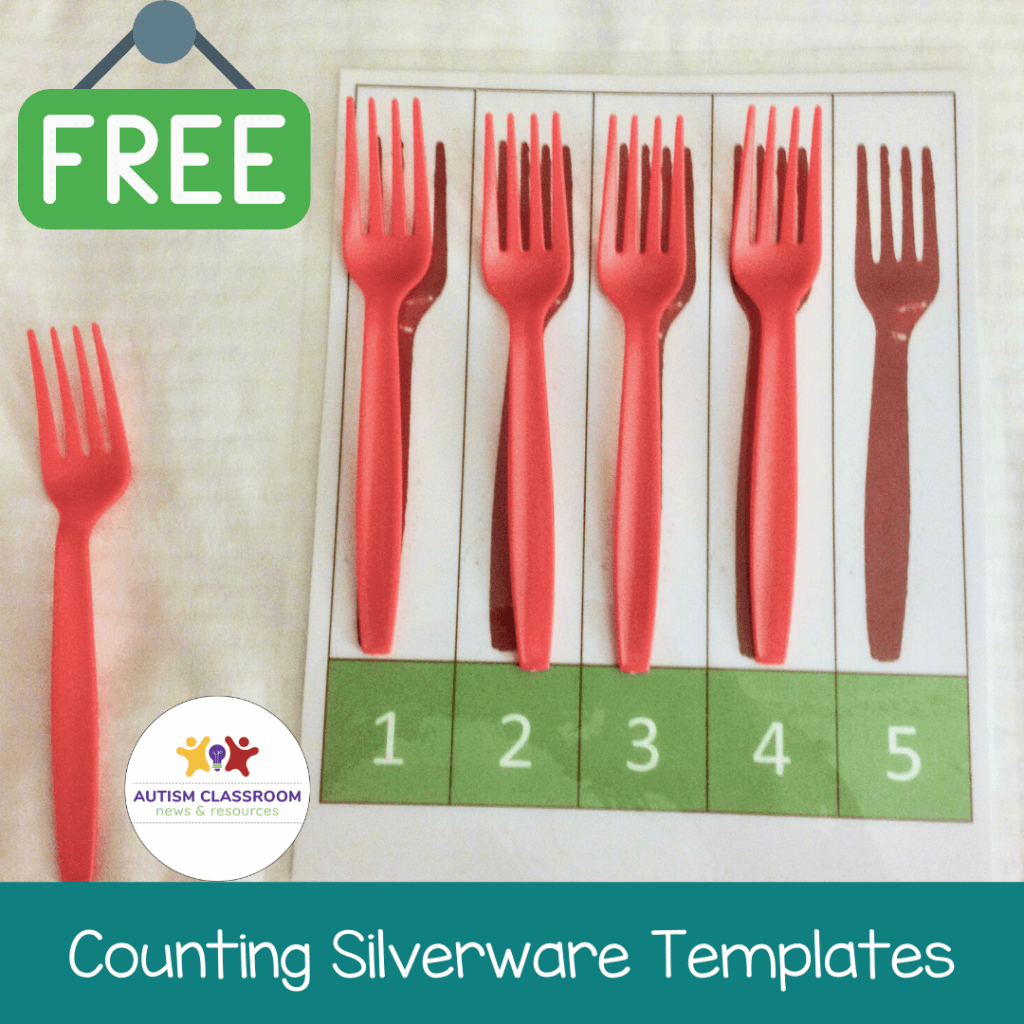
These forks (not shown: spoons, knives) were for a student in middle school who was still working on 1-1 correspondence, but we wanted the counting to be functional. He still needed a number line or a jig for counting, so we developed a jig for forks, spoons, cups and plates that he could use for working on counting as well as use to set the table. He could set out 5 forks, count them, and then set the table with them. We made them by just taking pictures of the forks. We did the same thing with coins for counting. This used age-relevant materials to teach a skill that was typically taught to younger students. You can download them free below.
Setting Up a Community Prep Area
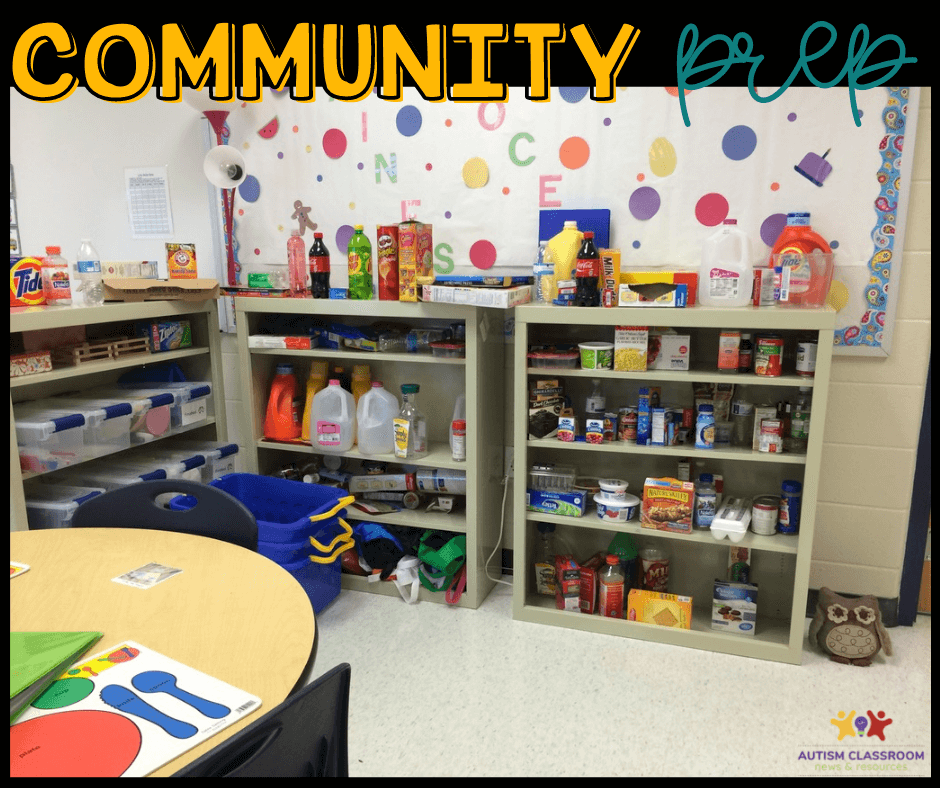
We have set up mock grocery stores in classrooms where we couldn’t take the students out for community-based instruction as often as they needed to really master the skills. We saved empty boxes and cans that we would put prices on. The students would have a list and a budget and have to go to the store in the room or a neighboring room and shop. We often tie this into cooking activities.
In this classroom, they paired this with flyers from the local grocery store as well as the grocery store activities from my Special Education Grocery Store Activities for Functional Life Skills. In the picture below, in the upper right hand corner, a student would have to answer a question about coupons from a grocery flyer.

The closet, on the left side of the picture, was designated for students to take inventory and restock. Some of the items were common classroom supplies while others were empty containers we saved and used. The students had a list of what they should have on each shelf and had to restock the shelves each day.
And the task card is from a set of functional reading task cards to work on food sight words. You can find them in my store here.
You can also check out my TPT store. You’ll find all the life-skills related materials in this category.
I hope this post has given you a place to start with your life skills classroom setup in middle or high school. I’ll include some additional posts for other similar classroom posts below. And don’t forget to grab your free downloads from the Resource Library as well.

